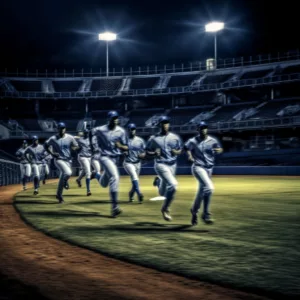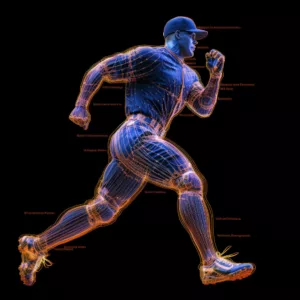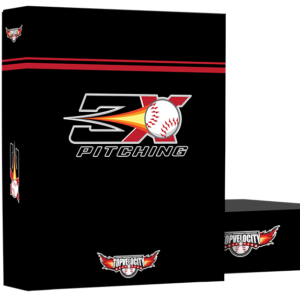 Are you curious why Pitchers Shouldn't Run much after pitching? MUST READ
Are you curious why Pitchers Shouldn't Run much after pitching? MUST READ
Pitching in baseball is a physically demanding sport that requires a complicated series of actions and puts a great deal of strain on a pitcher's arm, shoulder, and body. Throwing the ball at fast speeds repeatedly can cause muscle exhaustion, microtrauma, and even potential damage to the muscles, tendons, and ligaments involved. Pitchers must prioritize proper rest and recovery after pitching in order for their bodies to heal and repair.
Rest is required for the body's natural healing processes to occur. It permits muscles to heal from the extreme strain and microtears caused by pitching. Furthermore, appropriate rest aids in the reduction of inflammation, the replenishment of energy storage, and the restoration of the balance of numerous physiological processes in the body. Pitchers risk entering following games or practices with exhausted muscles, which can lead to poor performance, compromised mechanics, and an increased chance of injury if they do not allow adequate time to rest after pitching.
Excessive running immediately after pitching can impede recovery even further. Running puts additional strain on already tired muscles and tendons, increasing the likelihood of overuse injuries. Running's impact and repeated nature can damage joints, particularly the shoulder and elbow, which are already under tremendous pressure during the pitching motion. Pitchers who run too soon after pitching may prolong the healing process and aggravate any underlying muscular imbalances or weaknesses, making them more vulnerable to injury. To allow their bodies to fully recover and perform at their best, pitchers must appreciate the need for rest and avoid excessive running after pitching.
Pitchers Shouldn't Run: Muscle-Tendon Complex's Less Compliant
 The muscle-tendon complex (MTC) is critical to the success of pitchers and other athletes. The MTC is made up of muscles, tendons, and aponeurosis, which all work together to generate force and allow movement. The MTC's elastic characteristics are critical for optimal performance.
The muscle-tendon complex (MTC) is critical to the success of pitchers and other athletes. The MTC is made up of muscles, tendons, and aponeurosis, which all work together to generate force and allow movement. The MTC's elastic characteristics are critical for optimal performance.
According to research, the MTC of knee extensor muscles, such as the vastus lateralis, plays an important role in exercises such as pitching. The elastic characteristics of the MTC in long-distance runners (LDR) and untrained persons (CON) were compared in a study. When compared to CON, LDR had reduced maximum elongation (Lmax) and MTC compliance. This implies that the LDR MTC is less compliant and has a smaller capacity for energy storage during lengthening, which may be associated with inferior performance in activities such as counter-movement jumps (CMJ).
Kubo, K., Kanehisa, H., Kawakami, Y., & Fukunaga, T. (2000). Elastic properties of muscle-tendon complex in long-distance runners. European journal of applied physiology, 81, 181-187.
The Effects of Running Following Pitching: Pitchers Shouldn't Run
Running immediately after pitching might be harmful to a pitcher's recovery and performance. Several reasons exist for pitchers to avoid extensive running after pitching:
- Enhanced Muscle Fatigue: Pitching is a physically demanding sport that puts a lot of strain on the muscles and tendons that are involved in the pitching motion. Pitching's repetitive nature can result in muscular fatigue, which is characterized by decreased muscle function and an increased risk of injury. Running shortly after pitching can worsen muscle fatigue and impede recovery.
- Muscle Recovery Delay: Muscle healing and restoration require adequate rest. Running after pitching can cause further microtrauma to the muscles and interfere with the healing of damaged tissues, delaying recovery. Rest allows the body to replenish energy reserves, mend muscle fibers, and reduce inflammation, resulting in speedier recovery and a lower chance of overuse injuries.
- Increased Injury Risk: Pitching already puts a lot of strain on the shoulder and elbow joints. Running just after pitching can put additional strain on these joints, increasing the risk of overuse issues such tendinitis, ligament sprains, and stress fractures. Running's high impact and repetitive actions can add unneeded strain to already weary muscles and joints, making them more prone to injury.
- Poor Performance: Running after pitching might have an adverse effect on a pitcher's performance. Muscle fatigue and poor muscle-tendon compliance can result in decreased throwing velocity, accuracy, and overall performance. Furthermore, the lower elastic energy absorption found in LDR can impair power generation during motions such as CMJ. Pitchers can perform at their best and maintain consistent performance throughout the season with optimal recovery.
Pitchers Shouldn't Run: FAQs
- Should pitchers avoid any physical activity after pitching?
While total recovery is not often required, pitchers should avoid high-intensity activity immediately after throwing. Walking or light stretching, for example, can enhance blood flow and aid in healing. Running or engaging in rigorous activities, on the other hand, should be avoided to minimize further strain on weary muscles. - How long should pitchers wait after pitching before running?
The amount of time required to rest before running after pitching depends on various factors, including pitch count, intensity, and individual recovery rate. Pitchers should give at least 24 to 48 hours of rest before indulging in strenuous running exercises as a general rule. It is critical to listen to your body and schedule appropriate healing time. - Can pitchers exercise in other ways after pitching?
After throwing, pitchers can benefit from low-impact exercises that enhance flexibility and mobility, such as yoga or swimming. These exercises can aid in the maintenance of joint range of motion, the improvement of flexibility, and the overall recuperation. However, workouts that put too much effort on the throwing arm and body must be avoided. - Are there any stretches that pitchers should perform after they pitch?
After pitching, pitchers can benefit from dynamic stretching exercises that target the muscles involved in pitching. These exercises can aid with blood flow, range of motion, and muscle stiffness. Static stretching, on the other hand, should be avoided immediately after pitching because it might further strain weary muscles. - How might pitchers improve their post-pitching recovery?
Pitchers should prioritize rest, water, and good diet after pitching to maximize recovery. Rest allows the body to mend and restore itself, while staying hydrated and eating nutrient-dense foods replenishes energy stores and aids muscular recovery. A good night's sleep is also necessary for healthy recuperation and performance. - Is it possible for pitchers to progressively increase their running intensity after pitching?
Pitchers can progressively raise their sprinting intensity after allowing enough rest and their muscles have fully recovered. It is critical to listen to your body and progress carefully to avoid overexertion and damage. Pitchers can construct a specific post-pitching recovery plan by working with a trained strength and conditioning coach.
Get the Best Program for Post Game Training
 Are you a pitcher looking to improve your performance? Want to improve your post-game routine and increase your pitching velocity? Look no further than the 3X Pitching Velocity Program, the ultimate system designed to help you improve your pitching performance.
Are you a pitcher looking to improve your performance? Want to improve your post-game routine and increase your pitching velocity? Look no further than the 3X Pitching Velocity Program, the ultimate system designed to help you improve your pitching performance.
The 3X Pitching Velocity Program provides you with access to a comprehensive training regimen designed exclusively to improve your pitching velocity and overall mechanics. This program combines cutting-edge tactics, tried-and-true routines, and professional advice to maximize your training and unlock your maximum pitching potential.
Post-game training should not be overlooked. With the 3X Pitching Velocity Program, you can take control of your growth and improve your performance. To get started, click the link below and discover the key to reaching your pitching objectives. It's time to up your game and dominate on the pitch like never before!
Buy the 3X Pitching Velocity Program right now and watch your pitching velocity and overall performance improvements. Don't put it off any longer; take the first step toward pitching excellence today!




